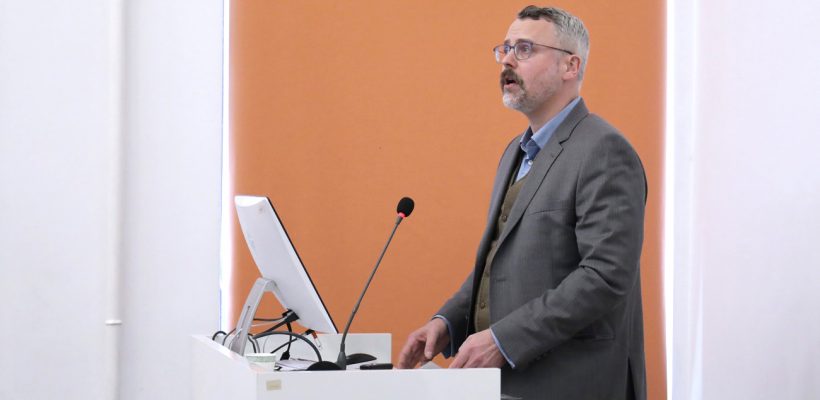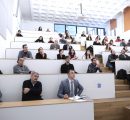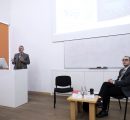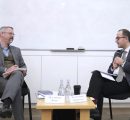
PSIA Book Presentation on the Nagorno-Karabakh Conflict
2 min readYEREVAN, Armenia – On January 29, 2020, the American University of Armenia (AUA) Political Science and International Affairs (PSIA) program held a book presentation with Dr. Laurence Broers, Caucasus program director of Conciliation Resources, associate fellow at Chatham House and co-editor-in-chief of Caucasus Survey. Dr. Broers presented his book “Armenia and Azerbaijan: Anatomy of a Rivalry” published in 2019 by Edinburgh University Press. During the event, PSIA Adjunct Lecturer Dr. Hovhannes Nikoghosyan served as the lead discussant.
Dr. Broers started the presentation by recalling that the conflict entered its fourth decade in 2013 and the ceasefire commemorated the quarter century last year. He continued that it often feels as if everyone analyzing this conflict is stuck in its rhetorical and analytical dead ends. However, the author posits, it is necessary to say something new about this conflict. The Nagorno-Karabakh issue is one of the longest-running conflicts in post-Soviet Eurasia. Dr. Broer’s book looks beyond tabloid tropes of ‘frozen conflict’ or ‘Russian land-grab’ to unpack both unresolved territorial issues left over from the 1990s and the strategic rivalry that has built up around them since. The book demonstrates how more than two decades of dynamic territorial politics, shifting power relations, international diffusion and unsuccessful mediation efforts have contributed to the resilience of this stubbornly unresolved dispute – one of the most intractable of our times.
The conflict demonstrated its escalation in the Four-Day War in 2016 “taking lives of at least 200 people.” Moreover, over the period of 25 years since the ceasefire, the conflict has become inseparable from a number of other threats to Armenian and Azerbaijani citizens other than war. Beyond Armenia and Azerbaijan, this conflict is the pivotal fracture that prevents its inhabitants from “enjoying the benefits of bottom-up networked regions.”
In his presentation, Dr. Broers compared this conflict with other post-Soviet conflicts, as well as with other long-term intractable rivalries, such as those between India and Pakistan, Arab countries and Israel, India and China, and North and South Korea. He explored the contours of the Armenian and Azerbaijani rivalries relative to other rivalries of this kind. Referencing a number of arguments in the book ordered into four clusters, the speaker expounded those as four pillars of rivalry operating at distinct levels of analysis, also explaining the role of external actors in the conflict, including Russian policy, which the author characterizes as very pluralistic.
Following the presentation, Dr. Nikoghosyan offered a couple of remarks, then posed questions to the author on the chances and opportunities of the peace process. The discussion was followed by a Q&A session, during which the audience had the opportunity to seek elaborations on some key aspects covered in the book sharing opinions on certain points, with which they agreed or disagreed.
The Political Science and International Affairs (PSIA) program of the American University of Armenia (AUA) equips students with advanced analytical reasoning, critical thinking, and communication skills through the study of political science and international affairs, emphasizing local and global perspectives and practical applications of theory. The program provides world-class teaching and research, producing graduates who can best contribute to the development of the nation.




